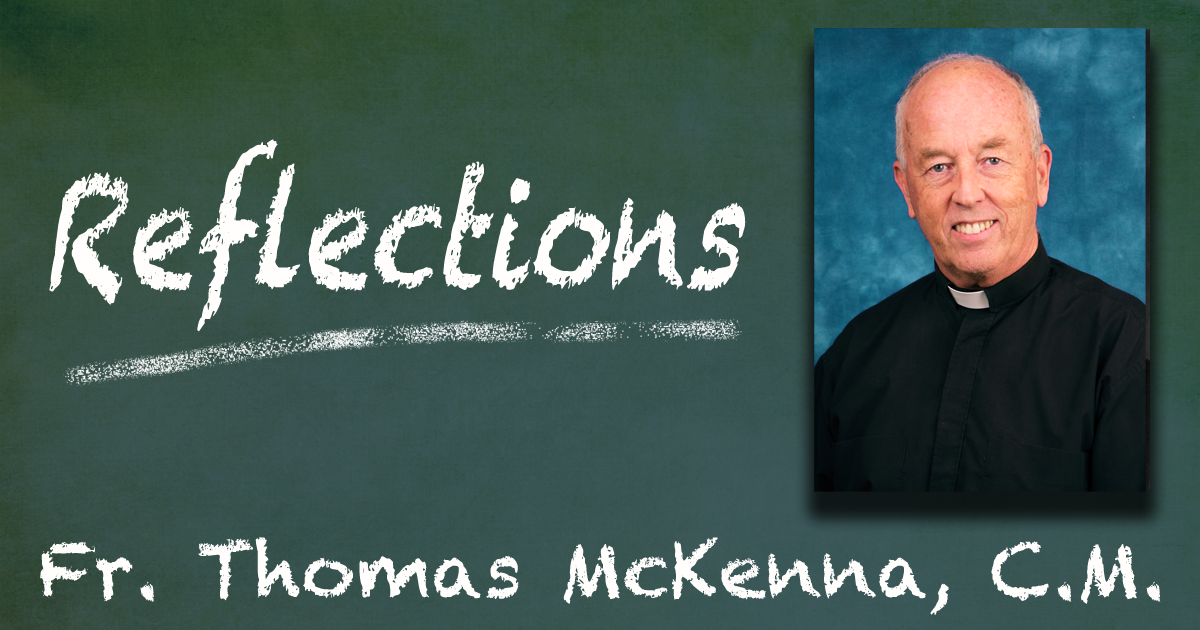
“Come on In” (Ex 34, 2 Cor 13, John 3:16)
The Feast of the Holy Trinity is an especially daunting one for the preacher. How even to touch on it, this Mystery of mysteries? A tentative step is by way of the imagination, and so I ask you to put yourself imaginatively into two different social situations, both happening at a “meeting” you’re attending.
One is a business convention where you find yourself standing in a circle of people most of whom don’t know you but who know each other. They are carrying on an energetic conversation with lots of animated back-and-forth but are leaving you totally out of it.
You have this creeping sense that you’re invisible, not seen, a figure in painted into the wallpaper. It’s that cold outsider feeling, with the people right next to you not even tilting their heads in your direction to acknowledge you.
The other is a family reunion, a summer picnic filled with cousins, uncles and aunts, siblings, nieces and nephews. You drive up, get out of your car and walk over to this big circle gathered under the tent.
And the place explodes with welcome. “Come on in. It’s so great you’re here. Wait until you learn the crazy thing Aunt Helen did just before you arrived. Remember two years ago when we… You’re looking wonderful, even if maybe a little heavier! (laughter…)”
What a difference. The exact opposite of cold, you feel warm all over. Not only are they going all out to welcome you in, they’re making that fuss to show how very glad they are to have you there like it’s the best thing that’s happened to them all day. “Come on in, we’ve been waiting for you. Grab a soda or beer and join in. You’re part of us, you belong, step into this circle,” which circle you sense is truly the circle of life.
It’s this “come-on-in” that can be a key, not only to the readings on this feast, but to the heart of what the Church celebrates when it focuses on The Trinity. Because both these, the readings and the feast, talk (better, proclaim) that wonderful all gracious movement from exclusion to inclusion, the saving shift from being left out in the cold to being welcomed into the warmth of a close loving circle, indeed a family circle.
Take Moses in Exodus. He’s up there on the Mountain with The Lord, right after the Israelites have sold out on God by worshipping the Golden calf. Moses is pleading that they not be condemned, cast out. And God’s answer. “I am the Lord, a merciful and gracious God, slow to anger and rich in kindness and fidelity.” In other words, the opposite of “Go away!” rather “Come on in!” And Moses reciprocates saying, “O Lord, do come along in our company!” In other words, “We welcome Your welcome.”
Then, Paul to his Corinthians. To conclude his long letter, he asks them to keep on encouraging and welcoming one another, to live in mutual peace. And then to cap it off he expresses what is his deepest wish, that they all come to be taken more closely into God’s life. Or as Paul so memorably expresses it, be taken into “the grace of Jesus Christ, the love of God and the fellowship of the Holy Spirit.“ In other words, be taken up into the life of the Trinity. It’s “Come on in” – both into the Christian community and into the very life of God’s own self, to the inside of God if we could put it that way.
It’s the Gospel reading, (made famous in all those “John 3:16, Read it!” signs in the ballpark), that says it best. We could come at it with this question, are we in or out with God? Is God freezing us out or embracing us in? And John’s famous answer: “God so loved the world that he gave his only begotten Son, so that everyone who believes in him might not perish, but have eternal life.” It’s a classic statement of God’s own, “Come on in.”
All of which points to the heart of what Christians have been believing about the Trinity all these centuries. The deeper meaning of this mystery isn’t focused on any mathematical sleight-of-hand about how three goes into one, so much as it leads us to how we imagine God. And that is, as communion.
It’s about how one goes about thinking of God in the way Jesus does:
- as the Spirit of love, who is the love between the Father and the Son,
- as the family circle of Father, Son and Holy Spirit.
- and most of all, God as that circle of burning love into which all of us are invited over and over again, no matter what.
To extend it further, this invitation to “come on in” happens whenever one person reaches out to another in love and respect. And for us who gather as a Vincentian family, it happens whenever we reach out in just that way to people who are up against it and who live and struggle on the margins of our society.
Most clearly of all, it happens when we gather in faith each Sunday around the table of the Lord’s Supper and enter into this memorial of Jesus inviting us again into his Father’s circle when we do this in memory of Him — and so again open ourselves to be taken up into the all gracious and all loving life of the Trinity.
Come on in…. It’s the inner call of the Trinity; it’s the heart of God’s own heart.







0 Comments